#nanai
Text
Fishskin Robes of the Ethnic Tungusic People of China and Russia
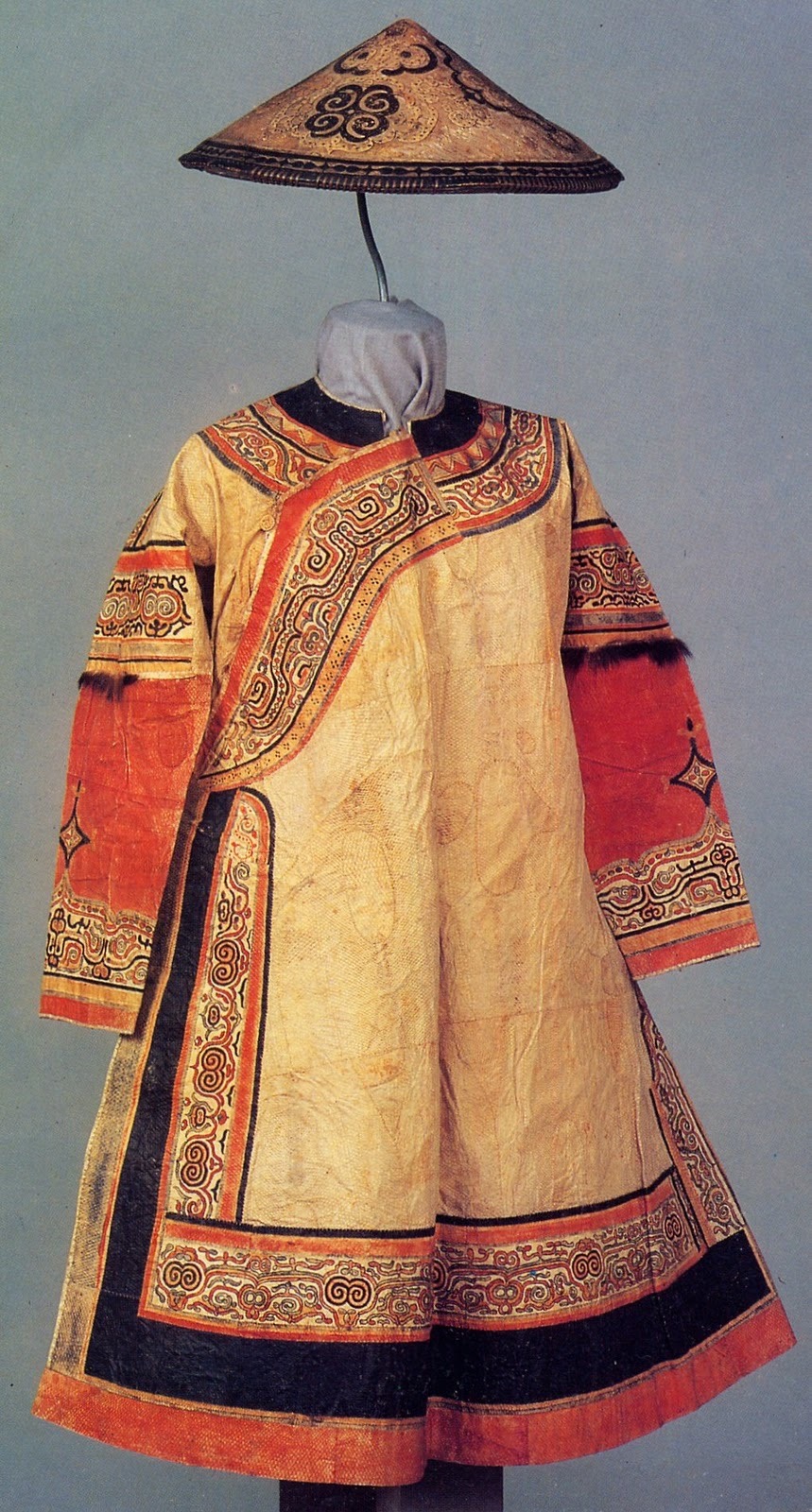
Oroch woman’s festive robe made of fish skin, leather, and decorative fur trimmings [image source].
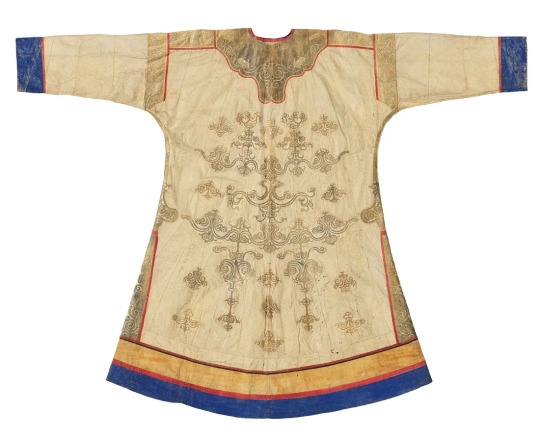
Nivkh woman’s fish-skin festival coats (hukht), late 19th century. Cloth: fish skin, sinew (reindeer), cotton thread; appliqué and embroidery. Promised gift of Thomas Murray L2019.66.2, Minneapolis Institute of Art, Minnesota, United States [image source].
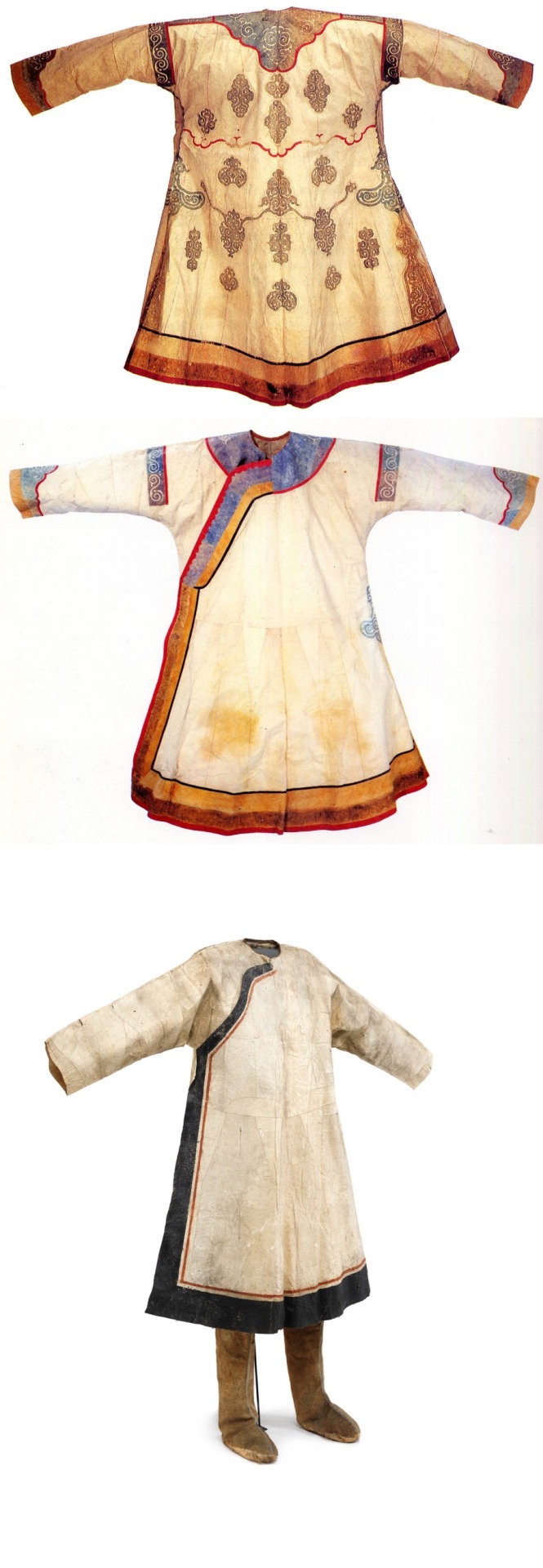
Back view of a Nivkh woman’s robe [image source].
Front view of a Nivkh woman’s robe [image source].
Women’s clothing, collected from a Nivkh community in 1871, now in the National Museum of Denmark. Photo by Roberto Fortuna, courtesy Wikimedia Commons [image source].
The Hezhe people 赫哲族 (also known as Nanai 那乃) are one of the smallest recognized minority groups in China composed of around five thousand members. Most live in the Amur Basin, more specifically, around the Heilong 黑龙, Songhua 松花, and Wusuli 乌苏里 rivers. Their wet environment and diet, composed of almost exclusively fish, led them to develop impermeable clothing made out of fish skin. Since they are part of the Tungusic family, their clothing bears resemblance to that of other Tungusic people, including the Jurchen and Manchu.
They were nearly wiped out during the Imperial Japanese invasion of China but, slowly, their numbers have begun to recover. Due to mixing with other ethnic groups who introduced the Hezhen to cloth, the tradition of fish skin clothing is endangered but there are attempts of preserving this heritage.
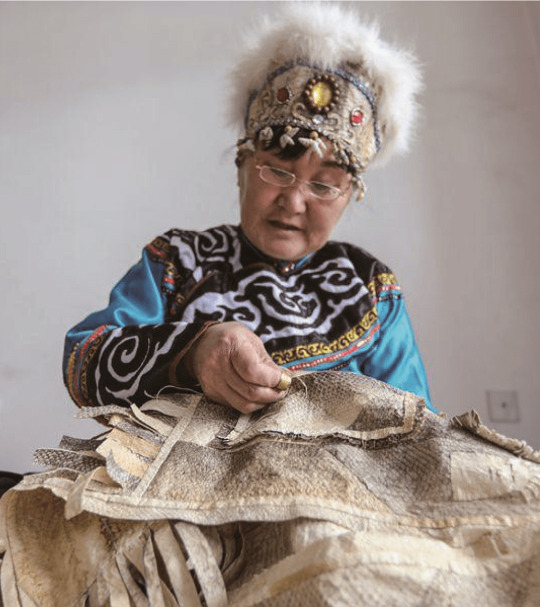
Hezhen woman stitching together fish skins [image source].


Top to bottom left: You Wenfeng, 68, an ethnic Hezhen woman, poses with her fishskin clothes at her studio in Tongjiang, Heilongjiang province, China December 31, 2019. Picture taken December 31, 2019 by Aly Song for Reuters [image source].
Hezhen Fish skin craft workshop with Mrs. You Wen Fen in Tongjian, China. © Elisa Palomino and Joseph Boon [image source].
Hezhen woman showcasing her fishskin outfit [image source].
Hezhen fish skin jacket and pants, Hielongiang, China, mid 20th century. In the latter part of the 20th century only one or two families could still produce clothing like this made of joined pieces of fish skin, which makes even the later pieces extremely rare [image source].
Detail view of the stitching and material of a Hezhen fishskin jacket in the shape of a 大襟衣 dajinyi or dajin, contemporary. Ethnic Costume Museum of Beijing, China [image source].
Hezhen fishskin boots, contemporary. Ethnic Costume Museum of Beijing, China [image source].
Although Hezhen clothing is characterized by its practicality and ease of movement, it does not mean it’s devoid of complexity. Below are two examples of ornate female Hezhen fishskin robes. Although they may look like leather or cloth at first sight, they’re fully made of different fish skins stitched together. It shows an impressive technical command of the medium.
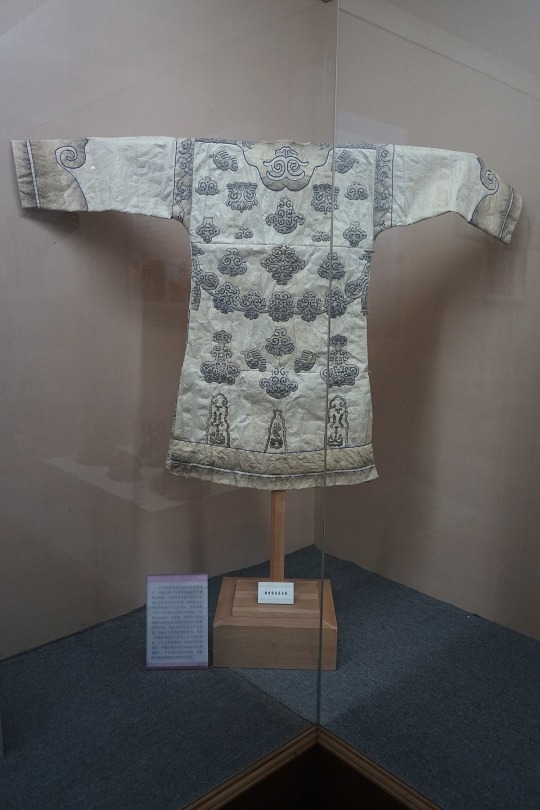
赫哲族鱼皮长袍 [Hezhen fishskin robe]. Taken July 13, 2017. © Huanokinhejo / Wikimedia Commons, CC BY 4.0 [image source].
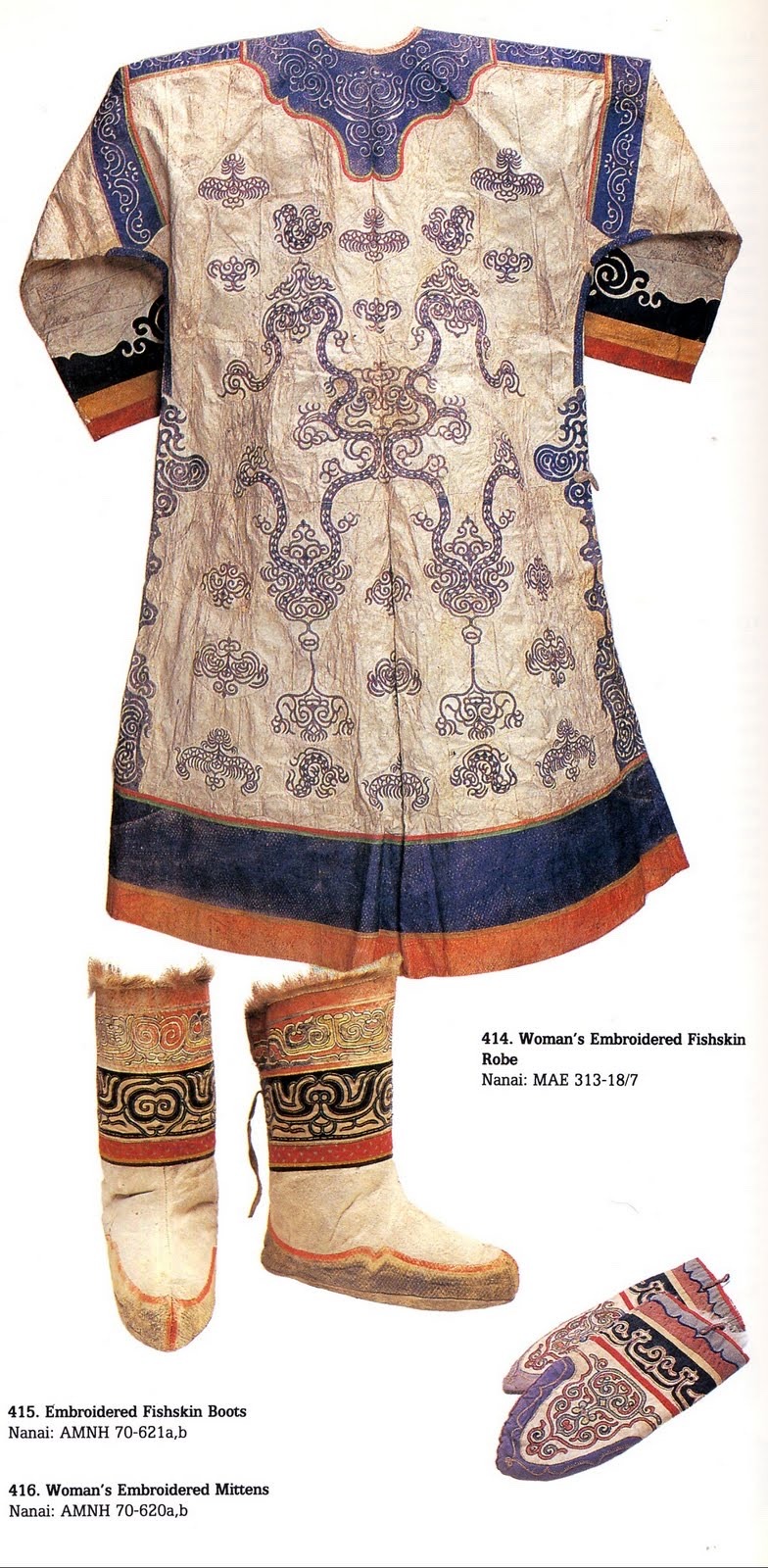
Image containing a set of Hezhen clothes including a woman’s fishskin robe [image source].
The Nivkh people of China and Russia also make clothing out of fish skin. Like the Hezhen, they also live in the Amur Basin but they are more concentrated on and nearby to Sakhalin Island in East Siberia.


Top to bottom left: Woman’s fish-skin festival coat (hukht) with detail views. Unknown Nivkh makers, late 19th century. Cloth: fish skin, sinew (reindeer), cotton thread; appliqué and embroidery. The John R. Van Derlip Fund and the Mary Griggs Burke Endowment Fund; purchase from the Thomas Murray Collection 2019.20.31 [image source].
Top to bottom right: detail view of the lower hem of the robe to the left after cleaning [image source].
Nivkh or Nanai fish skin boots from the collection of Musée du quai Branly -Jacques Chirac. © Marie-Lan Nguyen / Wikimedia Commons, CC BY 4.0 [image source].
Detail view of the patterns at the back of a Hezhen robe [image source].
Read more:
#china#russia#tungusic#hezhe#nanai#fishskin#ethnic minorities#nivkh#chinese culture#history#russian culture#amur basin#heilongjiang#east siberia#ethnic clothing
974 notes
·
View notes
Text
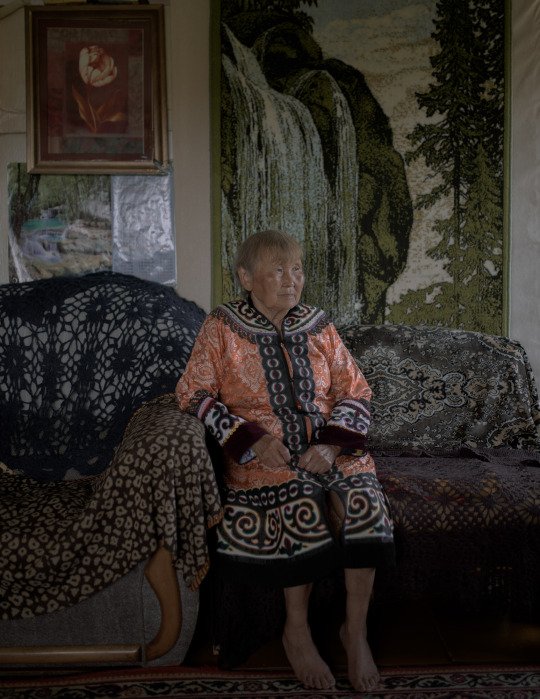
Nanai woman, Russia, by Alexey Pavlov
#nanai#russia#asia#north asia#traditional clothing#traditional fashion#cultural clothing#folk clothing
234 notes
·
View notes
Text
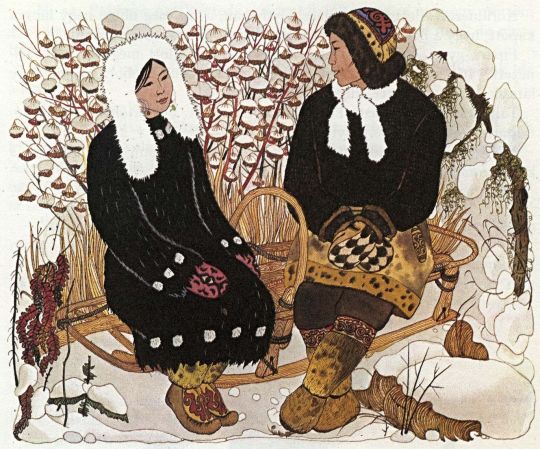


Иллюстрации "Чориль и Чольчинай". Нанайская сказка
Illustrations "Choril and Cholchinay". Nanai fairy tale
Illustrator Gennady Pavlishin
Иллюстратор Генадий Павлишин. Из "Амурские сказки" 1975
#Amur#tungusic#indigenous russia#indigenous russian#non-russian#Nanai#Нанайцы#Nanai culture#Культура Нанайцы#artist#art
601 notes
·
View notes
Text
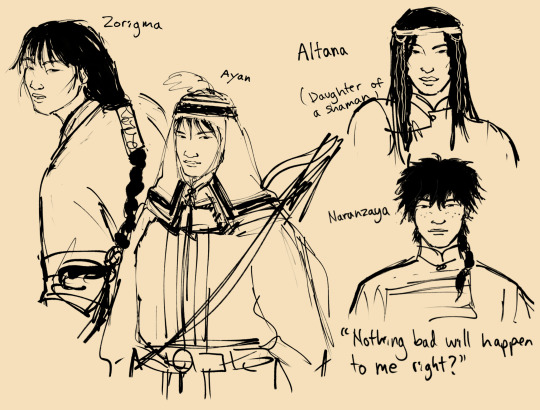

more ppl in my story. the characters in the top image are all north asian transgender lesbians. she/they for all except for naranzaya who uses they/them. the gumiho uses she/her and is korean.
#my art#my ocs#world beyond gods#zorigma#ayan#naranzaya#suk ja#altana#lesbian#transgender#indigenous#north asian#siberian#buryat#nanai#korean#gumiho#transmasculine#transfeminine#trans#transfem#transmasc#nonbinary
44 notes
·
View notes
Text
Diccionario 📚
Nanai se define como una caricia muy tierna con la que se trata de calmar un dolor o una pena. También que inspira agrado o ternura ❤️
16 notes
·
View notes
Text
Nanai/Dolagan fairytale and art

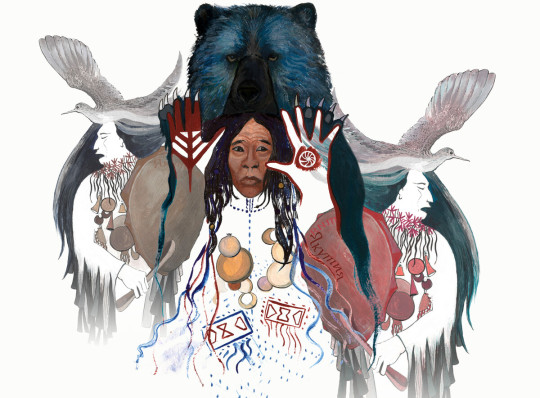

#indigenous#culture#indigenous russian#indigenous russia#important#russia#fypシ#fypage#colonization#landback#Nanai#Dolgan#indigenous art#indigenous rights#indigenous people#artwork#beautiful#siberia#siberian indigenous#indigenous siberian#siberian
23 notes
·
View notes
Text
Casi las 4 am y caminando sin rumbo fijo con alguien que no eres tú, buscando tu sonrisa, tu voz, tu mirada y la forma en que solíamos jugar...
6 notes
·
View notes
Text
"Shhhhh... it's okay, your safe now, Mi ma amoroso..."

Mi ma amoroso means: My loving sea, in Spanish!!
The blond monkie oc doesn't belong to me!!!
It belongs to a friend of mine who doesn't have tumbler!!
The ocs name is: Nanaimo or Nanai!!
Jiāng and Nanais shipname is Riverbamboo-
Also- Nanai isn't taller then jiāng-
Jiāng is just picking them up-
#lmk au#lego monkie kid#lmk oc#lmk art#lmk fanart#monkiearts#lmk#heng jiāng#Nanai#Nanaimo#Riverbamboo
6 notes
·
View notes
Text
Chuta que es difícil poder encontrar a alguien que te haga nanai...
5 notes
·
View notes
Text
q ganas de una noche de puros besitos y mimos
21 notes
·
View notes
Text


2 notes
·
View notes
Text


Иллюстрации "Как бельды воевать ходили". Нанайская сказка
Illustrations "How Beldy went to fight". Nanai fairy tale
Illustrator Gennady Pavlishin
Иллюстратор Генадий Павлишин. Из "Амурские сказки" 1975
#Amur#tungusic#indigenous russia#indigenous russian#non-russian#Nanai#Нанайцы#Nanai culture#Культура Нанайцы#artist#art
268 notes
·
View notes
Text
🫠🫠🫠

Me di cuenta q me puedo leer un libro entero en menos d 2 horas sin mi celular cerca.
XD
2 notes
·
View notes
Text
Anatol Donkan – FISCHLEDER: Deggendorf 28.06. bis 18.09.2022
Anatol Donkan – FISCHLEDER: Deggendorf 28.06. bis 18.09.2022
Anatol Donkan – ein gebürtiger Nanai – hat die fast verlorene Technik der Fischhautverarbeitung seiner Vorfahren wiederbelebt und perfektioniert. Die Nanai sind ein indigener Volkstamm, der ursprünglich am Unterlauf des Amur in Sibirien beheimatet war. Sie fertigten Kleidungsstücke, Taschen, Ritual- und Schmuckobjekte aus Fischhaut. Die Sonderausstellung zeigt sowohl historische als auch moderne…

View On WordPress
#Amur#Anatol Donka#angewandte Kunst#Deggendorf#Fischaut#Fischleder#Fischledermuseum#Handwerk#Handwerkskunst#Handwerksmuseum#Kunsthandwerk#Nanai#Naturgeister#Schamanen#Sibirien#Tradition
2 notes
·
View notes
Text

Fotito feliz en el bus rumbo a valdivia uvu
#Viaje#Valdivia#Paseando#Contenta#Girl#Cute#Linda#Nanai#Gorrito de vaquita#UvU#uwu#Travel#traveling#makeup#Curly hair
42 notes
·
View notes
